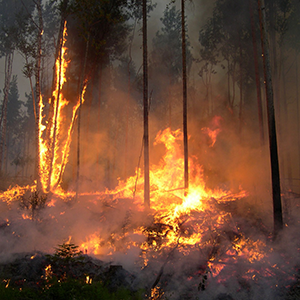Contact
anders.granstrom@slu.se, +46-90-786 8339, +46-70-229 729

Despite discussions over the last 20 years, there is still no database over wildfires and management fires in Sweden, which hampers both fire protection and nature conservation. A new SLU report details the need for accurate statistics in this area, the current status of relevant data sources and potential design of a national wildland fire database.
Information on wildfires could most easily be retrieved from the Incident reports that are sent to MSB (The Swedish civil contingencies agency) after completion of each wildfire incident, and which in their present form contain valuable data. The structure of these reports would however have to be modified to include also coordinates for the starting point and a shape-file delineating the perimeter of the burnt area, information that the suppression personnel can retrieve before leaving the site.
Information on management fires (date and a shape-file for the perimeter) can most easily be obtained directly from the land managers performing prescribed fires, near exclusively a few large entities (forest companies, the Swedish Church, Nature reserve managers, the military). A routine for delivering data should be agreed on by all of these.
Current weather and fire danger indices should be linked to each wildfire and management fire. This can easily be done through an automatic routine at the weather service (SMHI), given that day and position of each event is known. Once these basic pieces of information (time, point of origin, geographical extent, cause, weather and fire danger indices) is available in the database, external geo-information such as fuel type, forest volume etc. can be associated by the user for a range of analyses. A permanent and detailed database will be central for both long-term biomonitoring and wildfire risk assessments, and will beof general interest, not least in the perspective of climate change.
In order for a fire database to be realized, various actors must unite around a concept and determine who is to manage it.The Swedish Forest Agency might be the prime candidate, since they have a well-functioning public map service and since they already undertake a basic mapping of larger burnt forest areas.
anders.granstrom@slu.se, +46-90-786 8339, +46-70-229 729